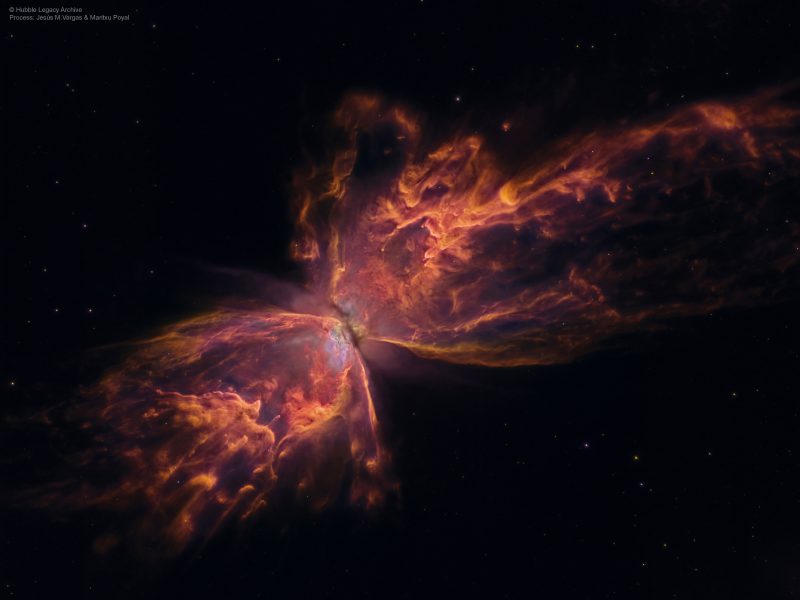The bright clusters and nebulae of planet Earth’s night sky are often named for flowers or insects. Though its wingspan covers over 3 light-years, NGC 6302 is no exception. With an estimated surface temperature of about 250,000 degrees C, the dying central star of this particular planetary nebula has become exceptionally hot, shining brightly in ultraviolet light but hidden from direct view by a dense torus of dust. This sharp close-up of the dying star’s nebula was recorded by the Hubble Space Telescope an
Who says science isn’t cool? Well, that crazy guy and his friends do but they don’t seem to have a handle on things anyway.
Another #Hubble @apod! Today, The Butterfly Nebula you know and love but with a twist. Read more about the image: https://t.co/R4PEifjMH6 pic.twitter.com/LtwhIH5ngc
— Hubble (@NASAHubble) February 8, 2017
You can view the full resolution image of the Butterfly Nebula by clicking on this link. It is even more impressive up close.
Source: APOD: 2017 February 8 – The Butterfly Nebula from Hubble

 RSS – Posts
RSS – Posts
What do you think?